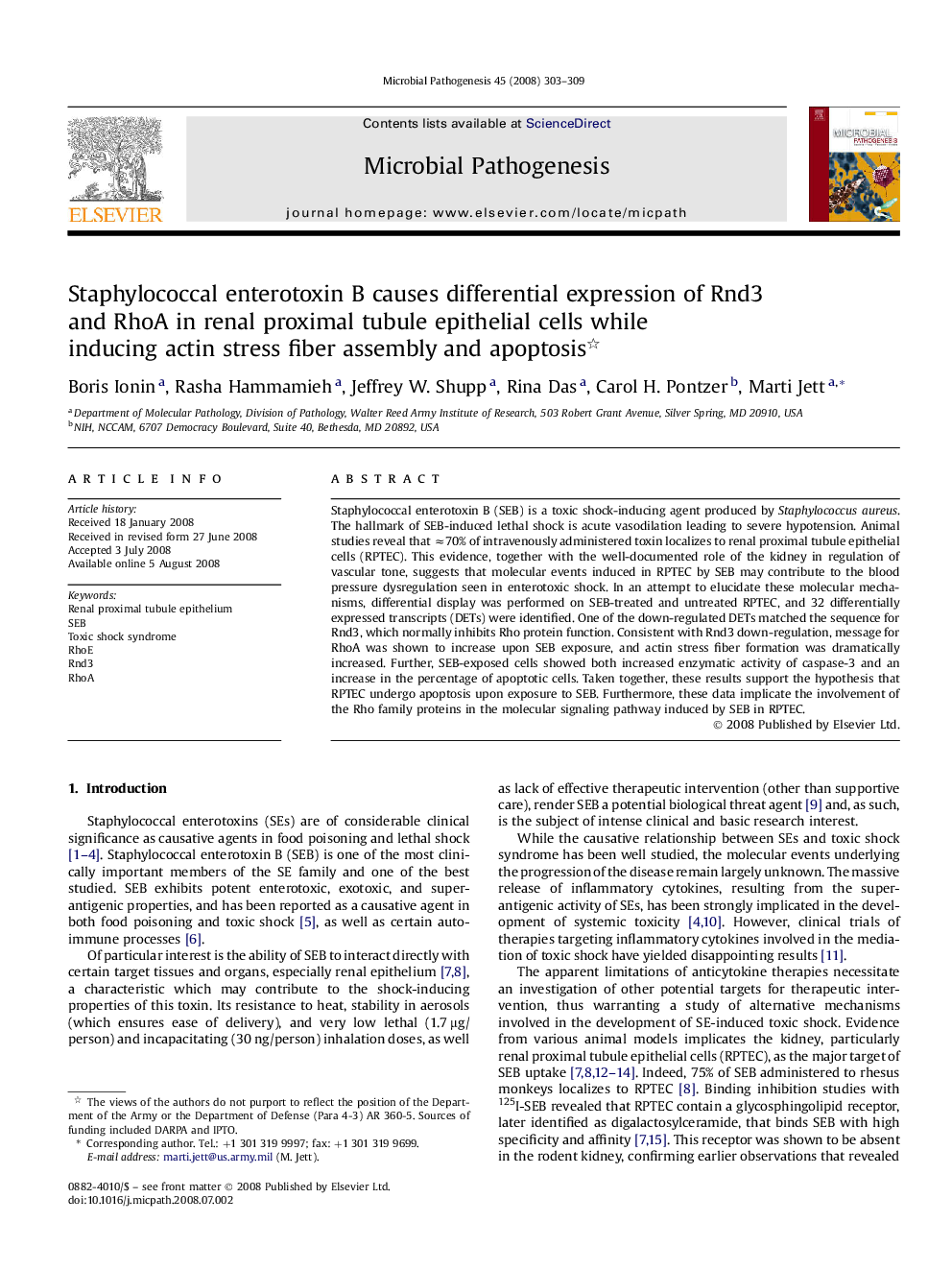| Article ID | Journal | Published Year | Pages | File Type |
|---|---|---|---|---|
| 3417133 | Microbial Pathogenesis | 2008 | 7 Pages |
Staphylococcal enterotoxin B (SEB) is a toxic shock-inducing agent produced by Staphylococcus aureus. The hallmark of SEB-induced lethal shock is acute vasodilation leading to severe hypotension. Animal studies reveal that ≈70% of intravenously administered toxin localizes to renal proximal tubule epithelial cells (RPTEC). This evidence, together with the well-documented role of the kidney in regulation of vascular tone, suggests that molecular events induced in RPTEC by SEB may contribute to the blood pressure dysregulation seen in enterotoxic shock. In an attempt to elucidate these molecular mechanisms, differential display was performed on SEB-treated and untreated RPTEC, and 32 differentially expressed transcripts (DETs) were identified. One of the down-regulated DETs matched the sequence for Rnd3, which normally inhibits Rho protein function. Consistent with Rnd3 down-regulation, message for RhoA was shown to increase upon SEB exposure, and actin stress fiber formation was dramatically increased. Further, SEB-exposed cells showed both increased enzymatic activity of caspase-3 and an increase in the percentage of apoptotic cells. Taken together, these results support the hypothesis that RPTEC undergo apoptosis upon exposure to SEB. Furthermore, these data implicate the involvement of the Rho family proteins in the molecular signaling pathway induced by SEB in RPTEC.
